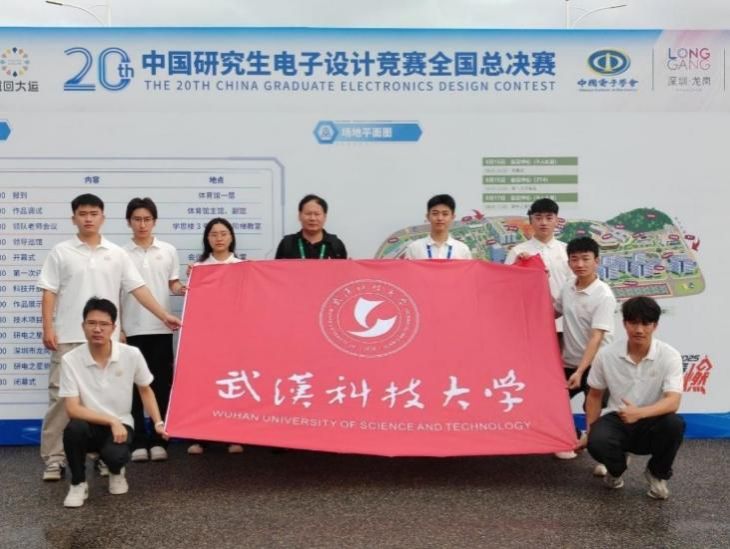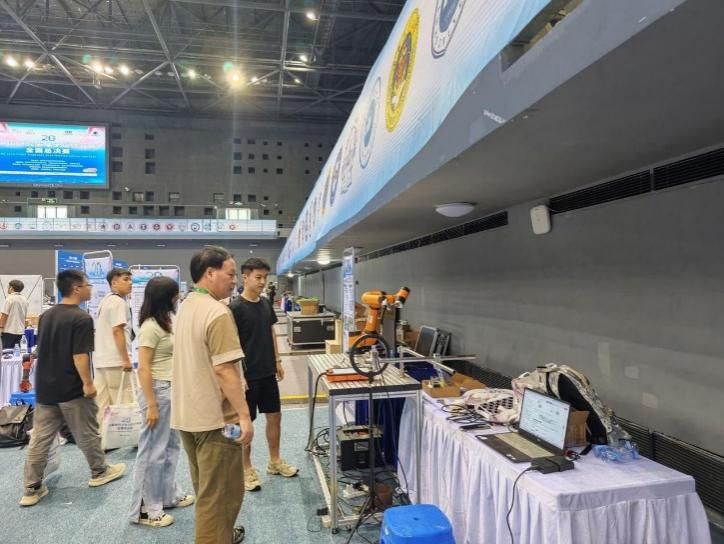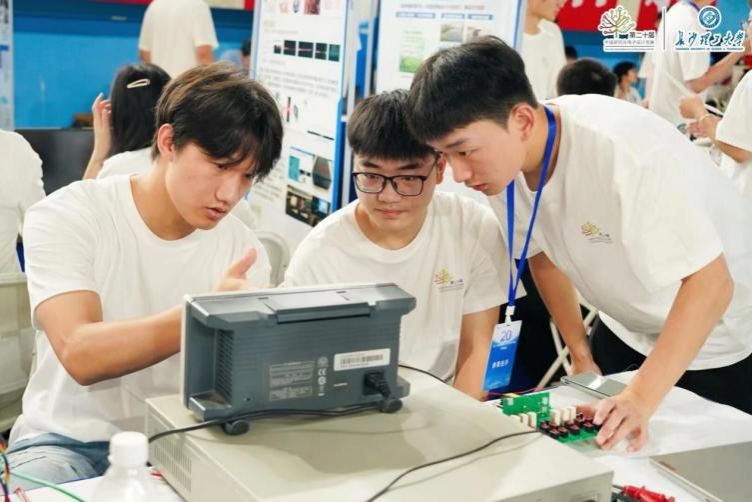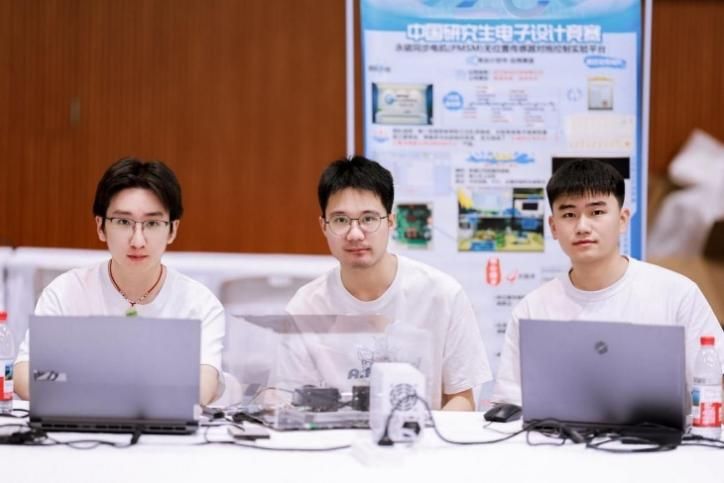Published by: Zhang Deyun Ma Zhiqi Editor: Chen Machuan
WUST News (Correspondents: Zhang Deyun, Ma Zhiqi) - From August 14th to 17th, the national finals of the GigaDevice Innovation Cup 20th China Postgraduate Electronics Design Contest were held in Longgang District, Shenzhen. The graduate team from Wuhan University of Science and Technology (WUST)achieved outstanding results, winning one first prize and one second prize in the national technical competition, along with one second prize in the national business competition. WUST was awarded the title of “Outstanding Organization”, and Professor Min Huashong from the School of Electronic Information received the “Outstanding Instructor” award. This accomplishment marks WUST's second double breakthrough since 2019 in securing a national first prize and increasing its total number of awards , ranking first among provincial universities in terms of both quantity and quality of awards.

The first prize-winning project in the technical competition, Draw to Weld: A Low-Cost Manual Guidance Device and Welding System, was completed by the Zhenhan Tianxia Team 2 from the School of Electronic Information. The team introduced a new interactive concept of "draw to weld", deeply integrating visual recognition, force-position hybrid control, and low-cost robotic arms to achieve a simplified teaching method where "drawing a line by hand results in precise robotic welding". Instructed by Min Huashong, the team iterated the system 7 times, enhancing its repeat positioning accuracy to 0.2 millimeters and improving welding efficiency by over 300%, earning high praise from on-site experts as "most promising for industrialization".

The second prize-winning project in the technical competition, Research on Wide-Range High-Voltage Auxiliary Power Supply, was presented by the Chu Pigeon Team from the School of Artificial Intelligence and Automation. Under the guidance of mentor Dian Renjun, the team addressed the power bottleneck of 10,000-watt lasers under extreme conditions by proposing a three-phase interleaved parallel + SiC high-frequency soft-switching topology, extending the output voltage range to 0-20 kV with continuously adjustable voltage and improving overall efficiency by 6.4%. This has been validated on laser equipment from Dawning Information Industry Co., Ltd.

The Zootopia Team from the School of Artificial Intelligence and Automation won a second prize in the business competition. Their project, Permanent Magnet Synchronous Motor Sensorless Control Experiment Platform, pioneered an integrated solution of virtual encoder + load control, achieving full-speed domain precise control of motors without position sensors. Under the systematic guidance of mentor Ning Bowen, the team conducted multiple drills and completed tasks such as the business plan, financial model, and two rounds of presentations.

Hosted by the School of Electronic Information with careful guidance and strong support from the Graduate School, the university’s participation began preparations in April. Through multi-channel promotion and precise alignment with graduate student interests, the school broke the historical record for registration in this competition.
This year marked the 20th edition and 30th anniversary of the China Postgraduate Electronics Design Contest. Guided by the Department of Degree Management and Postgraduate Education of the Ministry of Education, the event was co-organized by the Association of Chinese Graduate Education, the Youth Science Center of the China Association for Science and Technology, and the China Institute of Electronics. A total of 8,228 teams from 333 universities and research institutes nationwide participated, with less than 8% advancing to the finals. The contest has become the largest, most historic, and most influential discipline competition in China’s electronic information field.